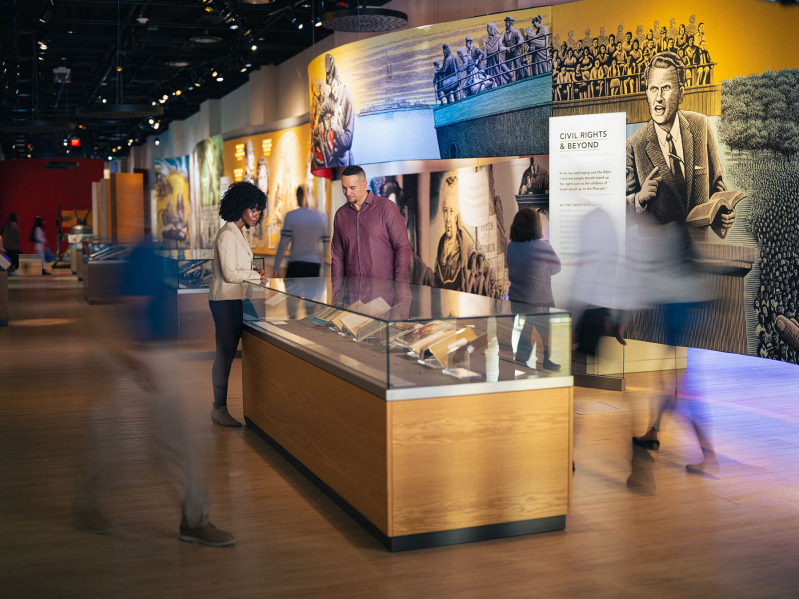
An exhibition featuring fragments of the Dead Sea Scrolls — the oldest known copies of biblical texts — will open at the Museum of the Bible in Washington, D.C., on Nov. 22, 2025, offering visitors in the United States a rare chance to see artifacts central to the history of Judaism and early Christianity.
The show, Dead Sea Scrolls: The Exhibition, is being organized in partnership with the Israel Antiquities Authority and Running Subway Productions. It will run until September 2026 and include more than 200 artifacts from Israel’s National Treasures collection, in addition to rotating displays of scroll fragments.
The Dead Sea Scrolls were first discovered in 1947 in caves near Qumran, close to the Dead Sea, by Bedouin shepherds. The texts, written in Hebrew, Aramaic and Greek on parchment and papyrus, date from the third century BCE to the first century CE. They include portions of almost every book of the Hebrew Bible, as well as hymns, prayers and community rules, providing scholars with a direct link to Jewish life and faith in the Second Temple period.
“The discovery of the Dead Sea Scrolls moved back the oldest biblical references over 1,000 years,” said Orit Shamir of the Israel Antiquities Authority in a statement. “They have revolutionized biblical scholarship by providing a glimpse into how the Bible was understood and practiced centuries before the common era.”
The Washington exhibition will present the scrolls in three rotations to protect the fragile materials. The first, from November 2025 through February 2026, will feature portions of Genesis, Job, Psalms and the War Scroll, among others. Later rotations will highlight texts such as the Great Psalms Scroll, Numbers, Lamentations, Isaiah, Jubilees and the Damascus Document.
Alongside the scrolls, the exhibition will display archaeological finds from across Israel. These include the Magdala Stone, unearthed in 2009 at a first-century synagogue near the Sea of Galilee, and wood fragments of a fishing boat excavated from the lake during a drought in 1986. Scholars believe the vessel resembles boats used in the time of Jesus, providing tangible insight into the world described in the New Testament.
Other pieces include items from the Pilgrim Road that led to the Jerusalem temple, ostraca (inscribed pottery shards) from Masada and a scroll wrapper from Qumran. Digital installations and historical photographs will explain the methods archaeologists used to study and conserve the fragile materials.
Museum officials said the exhibition will be the only location on the U.S. East Coast to host the Dead Sea Scrolls during their current tour, marking the 75th anniversary of the scrolls’ discovery. “It is an incredibly rare and unique opportunity to see the oldest copies of biblical fragments alongside artifacts that help us to better understand the biblical world,” said Bobby Duke, chief curatorial officer of the museum.
Educational programming will accompany the show, with lectures and activities designed to help visitors engage with the cultural, historical and religious context of the scrolls. Children will be able to participate in an interactive scavenger hunt through the museum focused on the scrolls’ discovery and preservation.
The scrolls have previously been exhibited in Jerusalem, Europe, and several U.S. cities, but their limited display schedule and strict conservation rules mean they are rarely available to the public. For many scholars and faith communities, the Washington exhibition represents an opportunity to explore how ancient manuscripts continue to shape modern understanding of sacred texts.





